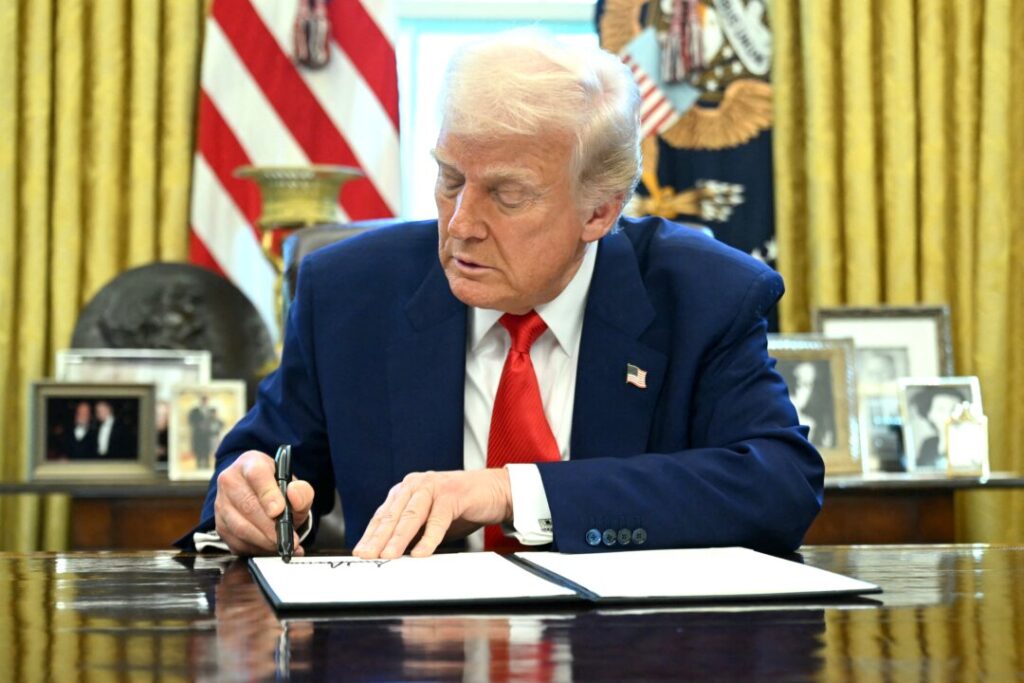The order includes a set of actions to lower prices, standardize pricing, improve transparency and reduce drug development costs.
Since 2020, certain drugs have been permitted to import from Canada. This is often available at a lower price under section 804 of the Food, Drugs and Cosmetics Act. However, it requires Food and Drug Administration approval and the process is complicated.
Florida is now the only state allowed to import drugs from Canada, and the approval process took over three years.
Trump’s order directs the Food and Drug Administration to improve the process and encourages states to apply for permission to import drugs.
An analysis by Health Research Group by KFF found that per capita spending is 42% higher in the US than in Canada.
Price reduction
Three items in the executive order aim to reduce the costs of drugs already available in the United States.
The first such action is to revisit the Medicare drug negotiation program approved by the Inflation Reduction Act.
The program allows Medicare to negotiate with pharmaceutical companies to reduce the costs of approved branded drugs for Medicare Part B and Part D beneficiaries.
The first round of low-cost, including 10 prescription drugs, comes into effect on January 1, 2026. In 2027, a second round of 15 drugs will be available to Medicare beneficiaries.
White House officials told reporters the Trump administration will improve the program and make it more transparent.
The second price reduction action aims to make payments for Medicare prescription drugs worth the cost of the supplier. Currently, Medicare pays 35% more than the actual cost of some medications.
The third provision for lowering prices directs that Medicare will take that step to ensure that prescription drugs pay an equivalent price.
Currently, Medicare can pay up to 60% for drugs dispensed in outpatient clinics than the same drug dispensed in a doctor’s office.
The fourth action item directs Dr. Mehmet Oz, administrator of the Centers for Medicare and Medicaid Services, further reducing the price of insulin.
The order accomplishes this by ensuring that all discounts on insulin and epinephrine the government provides to healthcare providers are handed over to consumers.
Drug Pipeline
Other provisions of Trump’s Order aim to reduce costs by improving drug development and approval processes.
First, the order directs the Food and Drug Administration to streamline the approval process for generic and biosimilar drugs. This could reduce medication prices for some patients by as much as 80%.
According to the White House, there is a backlog of generic and biosimilar drugs currently awaiting approval.

Nurse Salina Padilla (L) will prepare Dr. Prabakar Tummala of bumranivimab, a monoclonal antibody injection, at Desert Valley Hospital in Victorville, California on December 17, 2020. Irfan Khan/Los Angeles Times/TNS
Second, Trump’s order directs Health and Human Services Secretary Robert F. Kennedy Jr. to work with Congress to address what the administration considers as an imbalance focused on developing some very expensive drugs.
Small molecule drugs are produced from chemicals, are expensive and can treat a variety of diseases. Ibuprofen is an example of a small molecule drug.
Large molecular drugs come from organisms, are expensive to produce and are supplied by infusion. Gene-based therapies, immunotherapy, and hormone regulators are examples of large molecule drugs.
According to the White House, current systems encourage businesses to invest in developing larger molecule therapies that are more expensive than less expensive alternatives.
There is no timeline for implementing the legislative solution announced.
One element of Trump’s order cracks down on the practices of some brokers in the prescription drug supply chain.
The order directs the Ministry of Labor to establish rules regarding the disclosure of broker fees for prescription drugs.
According to the White House, the provisions for the rulemaking are included in the Consolidated Budget Act, but are not fully implemented.



